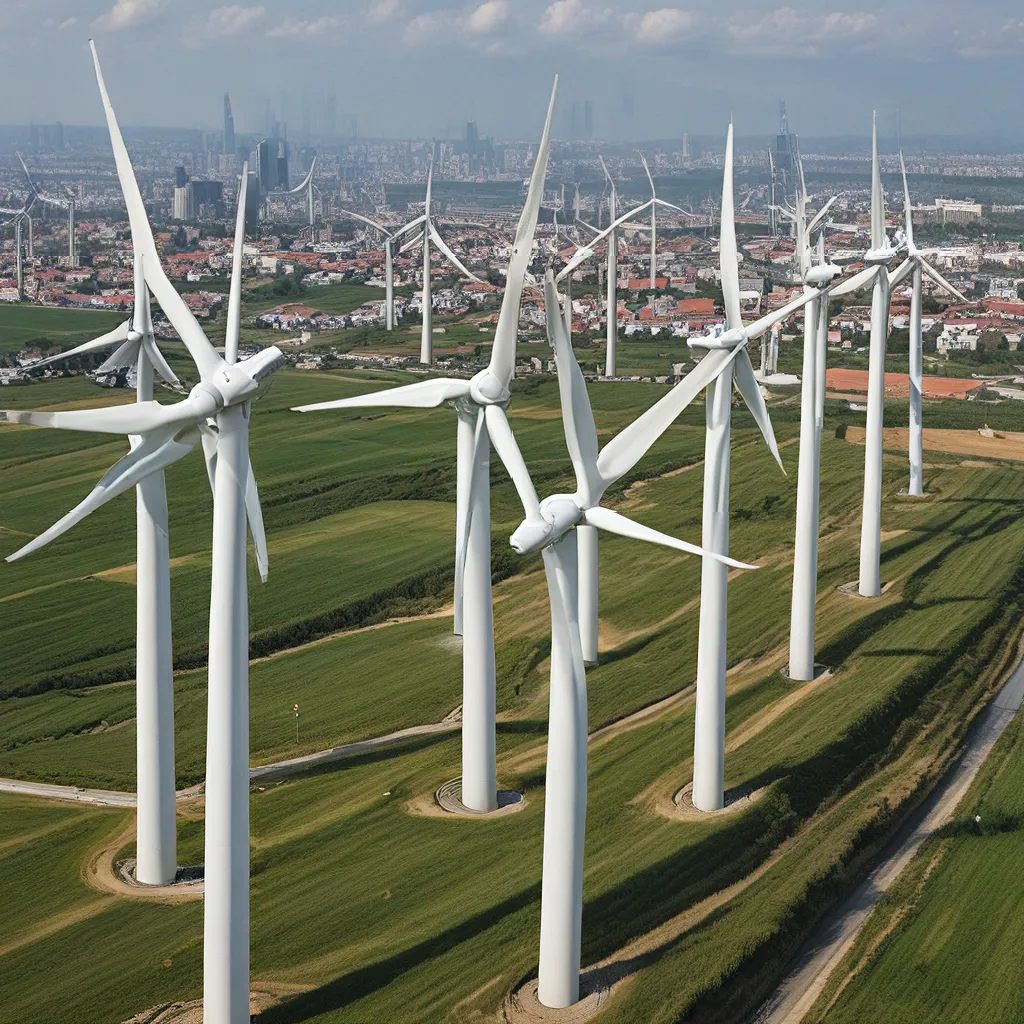
As someone who’s always been fascinated by the power of renewable energy, I recently stumbled upon a concept that’s got me truly excited – vertical wind farms. Now, I know what you might be thinking: “Wind farms? In the city? That’s got to be some kind of oxymoron.” But hear me out, my friends, because this innovative approach just might be the key to unlocking the renewable energy potential of our urban landscapes.
Let’s start with the basics. Traditional wind farms are typically found in wide-open, rural areas, where the wind blows freely, and the turbines can harness all that glorious energy. But let’s be honest, not everyone lives in the middle of nowhere, and those of us who call the city home often feel like we’re missing out on the renewable energy revolution.
Enter the brilliant minds behind vertical wind farms. These ingenious setups take the tried-and-true technology of wind turbines and give it a vertical twist, literally. Instead of the towering, horizontal turbines we’re used to seeing, these bad boys are stacked vertically, taking advantage of the unique wind patterns found in urban environments.
Now, I know what you’re thinking: “But wait, won’t the buildings and skyscrapers just block the wind?” Ah, my friend, that’s where the brilliance of vertical wind farms comes into play. You see, these systems are designed to thrive in the turbulent, swirling winds that are created by the very structures that seem like they’d be a hindrance.
According to the National Renewable Energy Laboratory (NREL), vertical wind turbines can actually harness the power of these urban wind patterns more efficiently than their horizontal counterparts. By strategically placing the turbines between buildings or atop skyscrapers, they can capture the accelerated airflow and convert it into clean, renewable electricity.
But the benefits of vertical wind farms don’t stop there. These innovative systems are also much more space-efficient than traditional wind farms, which require vast tracts of land. In the cramped confines of the city, vertical wind farms can maximize the available space, stacking the turbines vertically to produce significantly more power per square foot.
And let’s not forget the aesthetic appeal. Gone are the days of massive, hulking wind turbines marring the natural landscape. Vertical wind farms can be integrated seamlessly into the urban environment, with sleek, unobtrusive designs that blend in perfectly with the city skyline. Imagine a skyline dotted with these elegant, energy-producing marvels – it’s a vision of the future that I can truly get behind.
But the real beauty of vertical wind farms lies in their potential to transform how we power our cities. Imagine a world where the very buildings and structures that make up our urban centers are actively contributing to the renewable energy grid, reducing our reliance on fossil fuels and paving the way for a more sustainable future.
And you know what’s really exciting? This isn’t just a pipe dream. Companies like Firewinder are already making strides in this field, developing innovative vertical wind turbine designs and working to bring this technology to cities around the world.
As I delve deeper into this topic, I’m struck by the incredible possibilities that vertical wind farms offer. They’re not just a solution to our energy needs – they’re a catalyst for a more sustainable, resilient, and equitable future. Imagine neighborhoods where the residents are empowered to generate their own clean electricity, reducing their carbon footprint and their reliance on the grid.
But of course, as with any emerging technology, there are still challenges to overcome. Issues like noise pollution, bird and bat safety, and the integration of vertical wind farms into existing infrastructure will need to be carefully addressed. And let’s not forget the financial considerations – while the long-term benefits of vertical wind power are clear, the upfront costs can still be a barrier for some communities.
Still, I can’t help but feel optimistic about the future of this technology. As research and development continues, I’m confident that these challenges will be overcome, and we’ll see more and more vertical wind farms springing up in cities around the world.
And you know what’s really exciting? The potential for this technology isn’t limited to just wind power. Imagine a future where our urban landscapes are teeming with a diverse array of renewable energy sources – from solar-paneled skyscrapers to hydroelectric systems powered by urban waterways. The possibilities are truly endless, and I can’t wait to see what the future holds.
So, my fellow renewable energy enthusiasts, let’s embrace the power of vertical wind farms and the incredible potential they hold for our cities. Let’s dream big, think outside the box, and work together to create a more sustainable, resilient, and equitable future for all. Who’s with me?

